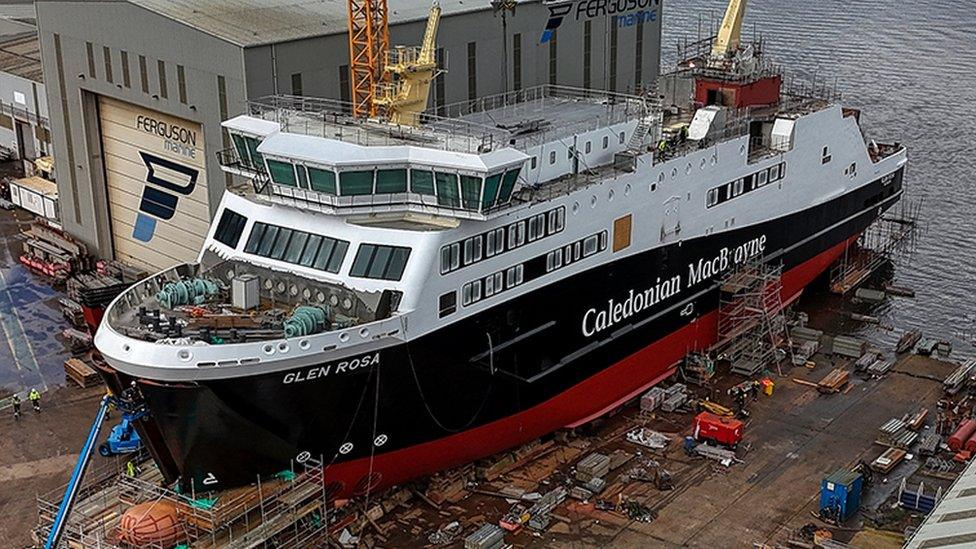Retired CalMac ferry finally heads to the breakers
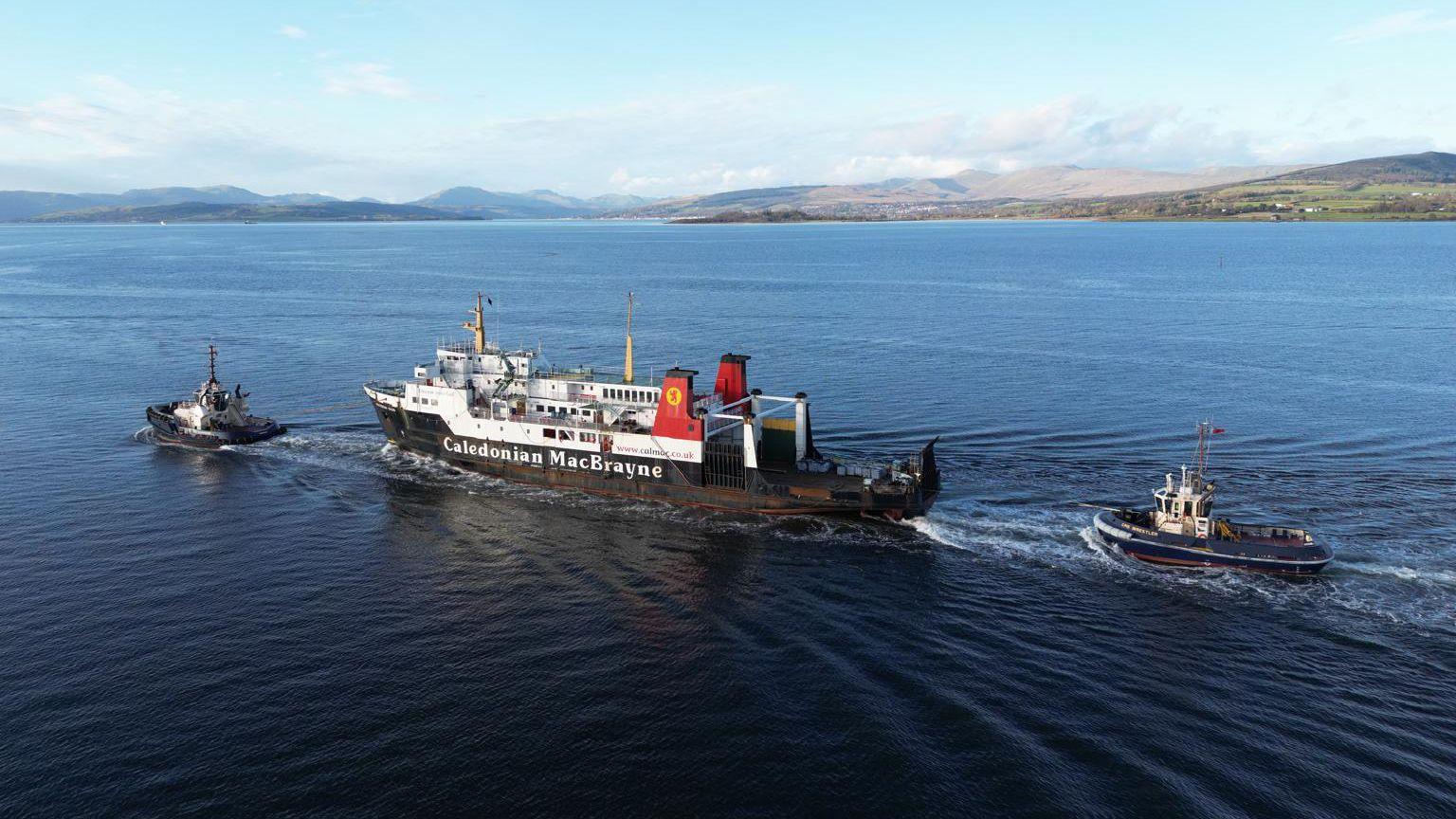
MV Hebridean Isles is towed out of the Firth of Clyde, to rendezvous with a larger tug which will take the ship to Denmark
- Published
A retired CalMac ferry has begun its final voyage to a breakers yard, leaving behind a legacy of vital spare parts and mementoes.
Since it was taken out of service last year, MV Hebridean Isles has been painstakingly stripped of anything useful including items destined for a museum, a public garden and a nautical training college.
Engine parts, navigation and other electrical equipment could end up on other CalMac vessels, while the maker's plate is now on display in North Yorkshire where the ship was built in 1985.
The ferry will now be towed to a dismantling facility at Esbjerg in Denmark.
The 40-year-old ship left Glasgow at midday, towed down river by two small tugs to rendezvous with a larger towing ship off Gourock.
A CalMac engineer played a farewell skirl of the pipes as the ferry left the berth at the King George V Dock at the start of its final journey.
Islanders bid a fond farewell to MV Hebridean Isles
- Published18 November 2024
CalMac Islay ferry to be retired and scrapped after 38 years
- Published3 August 2024
A CalMac spokeswoman said many former customers and crew would be saddened to see her leave Scotland for the last time.
"She has carried countless passengers, vehicles, memories, and milestones – becoming part of the fabric of the communities she served," she added.
Known affectionately as "Heb Isles", the ferry was retired from service last November due to the high cost and duration of repairs needed to renew expiring safety certificates.
Since then it has been moored in Glasgow while it was stripped for spares and keepsakes.
After salvaging anything useful, the last remaining CalMac crew members left the ship in May, and the ship was handed back to ferries agency CMAL for disposal.
But the final journey was delayed when CMAL discovered that post-Brexit regulations meant refrigerants and other hazardous chemicals would also have to be removed prior to departure.
A large ocean-going tug has been moored off Greenock for nearly a week, waiting for the final approvals to be signed off before it began its departure.
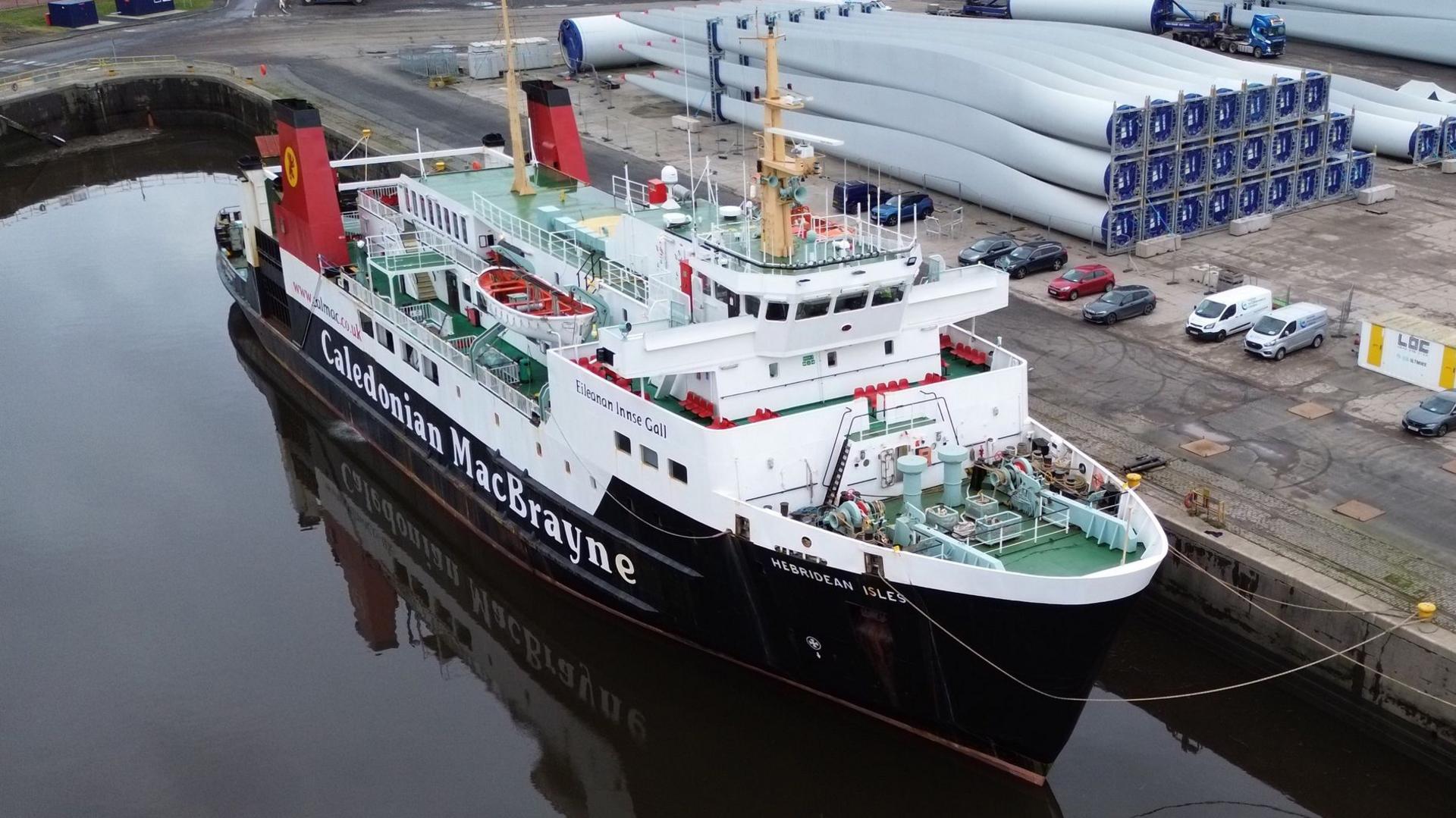
MV Hebridean Isles has spent almost a year moored at the King George V Dock in Glasgow
MV Hebridean Isles won a special place in the hearts of islanders during its many years of service, and numerous mementoes have been retained.
The ship's bell is displayed in a museum on Islay, one of the islands it used to serve, and rows of red seating and lifebuoys were donated to gardens in Port Ellen.
The clock, barometer, and a set of the ship's original bibles were gifted to North Uist Historical Society, while the muster list, compass card and safety signage will go on display in the Lochmaddy ferry terminal.
Other salvaged equipment will have a more practical benefit.
Training materials such as the magnetic compass housing, the fire locker and the emergency equipment locker - with all their contents - have been donated to City of Glasgow College to help prepare future generations of mariners.
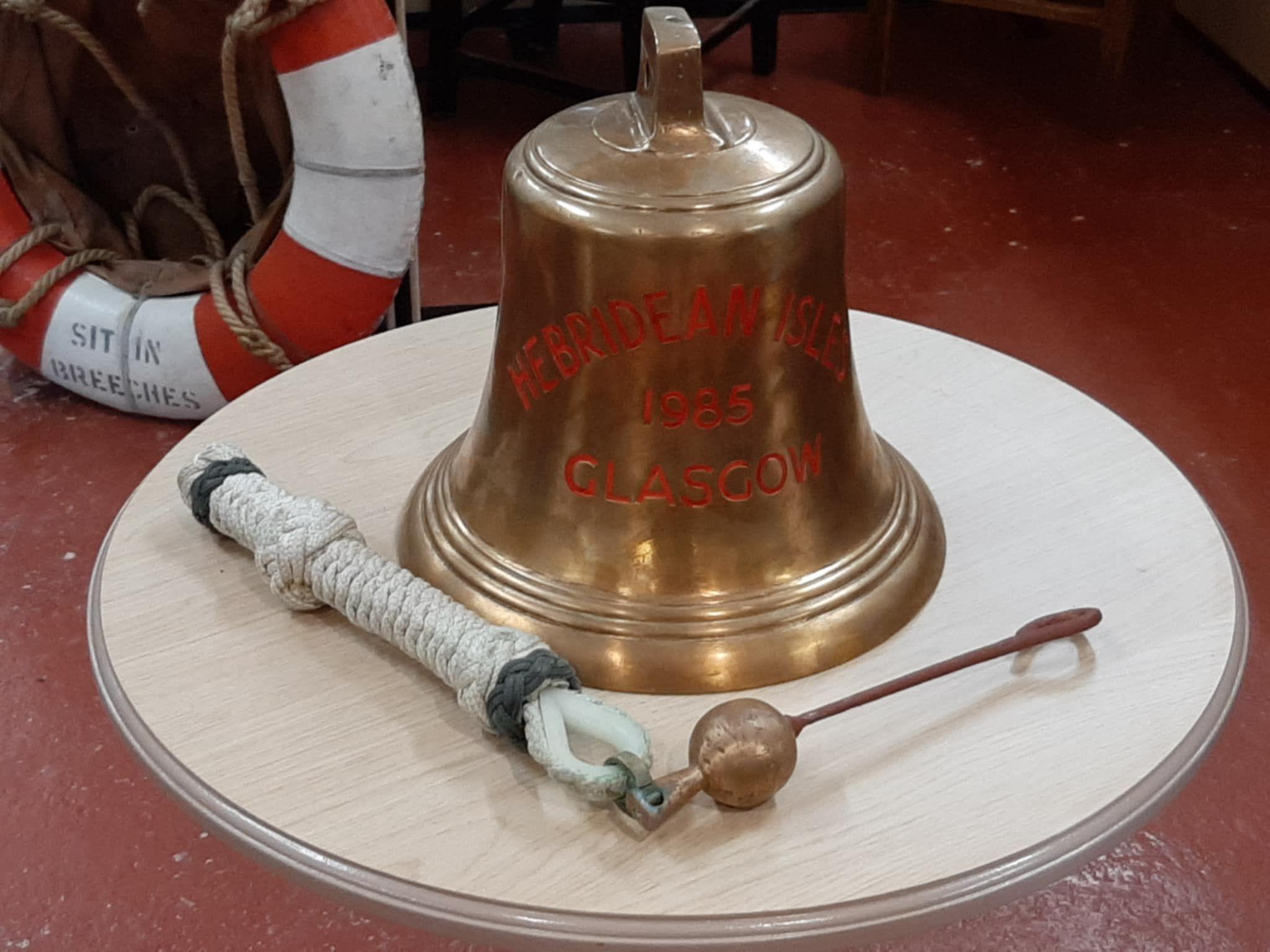
The bell of Hebridean Isles is now on display at the Museum of Islay Life in Port Charlotte
Many CalMac ships are now so old, replacement components are no longer available, meaning they have to be specially manufactured, delaying repair work.
But bits of Hebridean Isles will continue serving the CalMac fleet for years to come after being transferred to a warehouse in Gourock which houses spare parts.
The Mirrlees Blackstone MB275 engines have yielded cylinder heads, fuel pumps and fuel injectors which have been sent off for reconditioning.
The same engines are used by MV Isle of Arran, MV Caledonian Isles, MV Lord of the Isles and MV Isle of Mull - ships which are still part of the CalMac fleet despite being well beyond their expected service life.
The ship's emergency evacuation system has also been salvaged.
Hebridean Isles was launched sideways into the River Ouse at the long-gone Cochrane shipyard in Selby in 1985
The builder's plaque and a section of the hull have been gifted to the North Yorkshire town of Selby where the ferry was launched at the long-gone Cochrane Shipbuilders.
MV Hebridean Isles first entered the water in a spectacular sideways launch in 1985, but seven years later the shipyard closed for good.
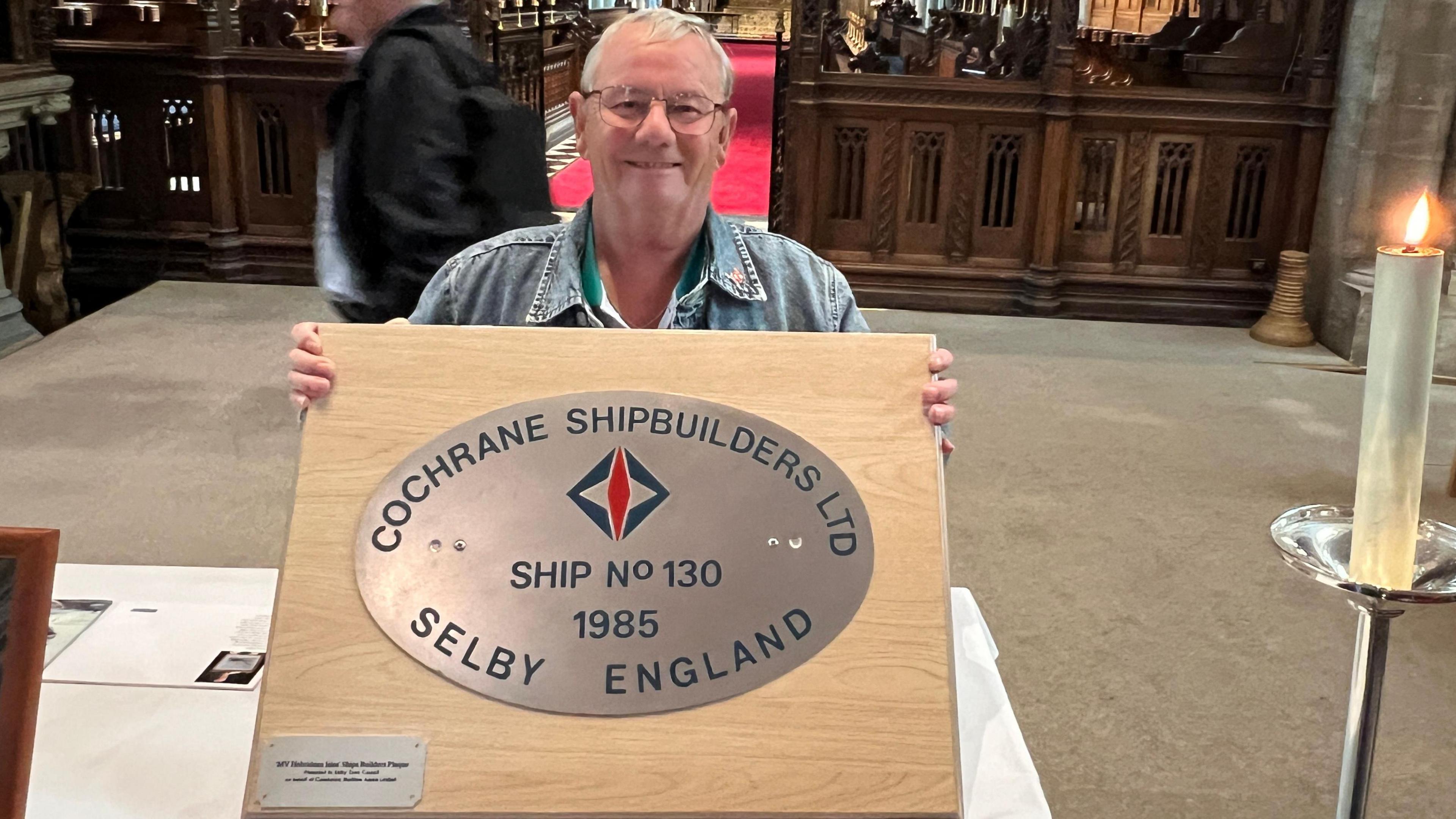
Former shipbuilder Stephen Mackenzie with the builder's plaque at Selby Abbey
Former Cochrane workers were among those who gathered at Selby Abbey in July for a ceremony to receive the nameplate and celebrate the town's shipbuilding past.
A section of the ship's bulwark which bears the ship's name is being prepared to go on display in a community woodland near the town.
Kevin Hobbs, chief executive of CMAL which owns the ferries operated by CalMac, said the two organisations had worked together in a complex operation to salvage as many useful spare parts as possible.
"We wish her well on her final journey and thank her for her many years of service," he said.
More stories like this
- Published26 November 2023
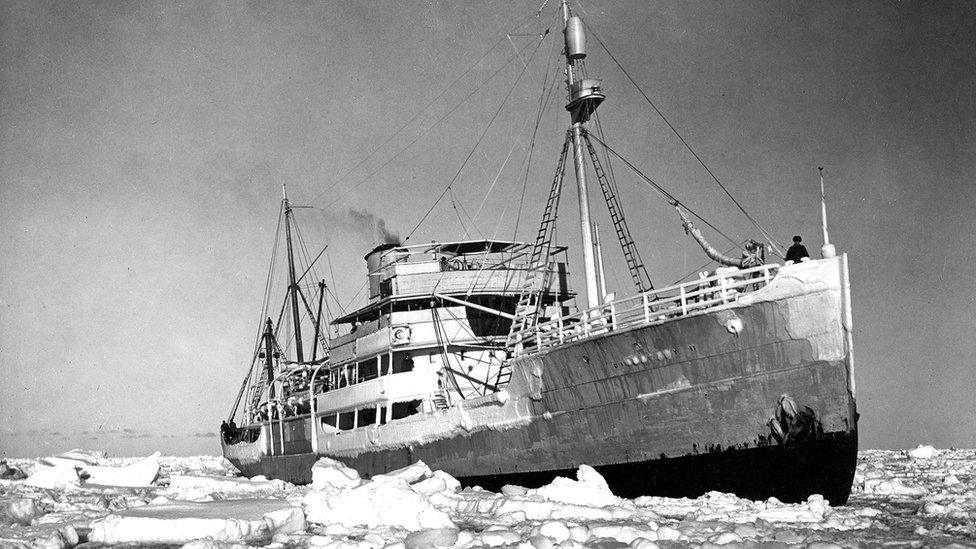
- Published6 April 2024
